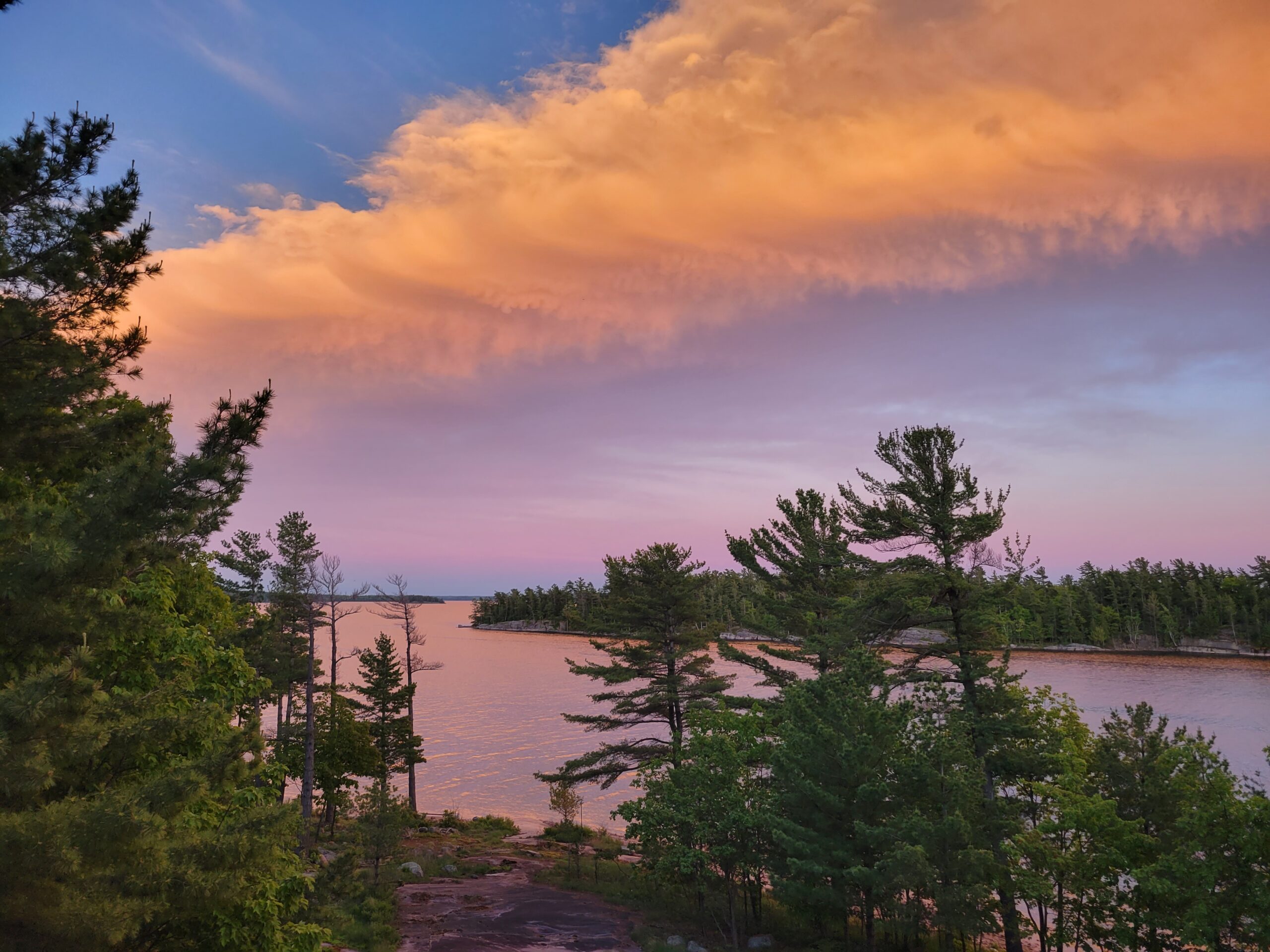Now that warm weather is finally here, water temperatures in lakes and local water bodies are becoming more swimmable.
Whether heading up to the cottage, camping, or taking a dip right here in Niagara-on-the-Lake, there are a few ways to make sure beach days are kind to the shoreline and the water.
My family has always gone camping each year at Killbear Provincial Park near Parry Sound. Growing up, I remember how soft my hair would feel after a week of swimming in crystal-clear Georgian Bay.
This summer, I’m actually working near Georgian Bay again for my PhD research on climate change and the effects of wildfires on ecosystems. After a long, hot day of fieldwork, there’s nothing better than throwing off the sweaty long sleeves and bug net, and jumping in the lake.
POP THE BUBBLE: It’s not uncommon to see folks bring their “all natural” shampoo and sneakily bathe in the lake. Brands like CampSuds even make biodegradable soaps for low-impact outdoor use.
But, if you follow the best “leave no trace” approach to interacting with nature, even biodegradable soap can’t be used in streams and lakes.
Soap has a detergent component that reduces water surface tension, which leads to reduced oxygen levels that harm fish and aquatic animals.
Detergents also break down and release phosphorus, which leads to overgrowth of algae and further issues for wildlife as algal blooms use up oxygen.
Soapy water can be safely disposed of in a hole at least 50 metres from shore – these are even the instructions on CampSuds bottles.
CATCH SOME SUN: Protecting yourself from UV rays is important, but some sunscreen ingredients can damage the ecosystem.
Originally, research showed oxybenzone in sunscreen was harming coral reefs; now, Hawaii and several other tropical islands have banned these products.
Scientists believe sunscreen has similar effects on Canadian lakes. When sunscreens build up on top of water, they make aquatic insects less able to lay eggs, which eventually means less food is available for fish and birds.
Lab studies have also shown oxybenzone causes organ damage to fish and makes it hard for aquatic plants to photosynthesize. UV-protective clothing or mineral-based sunscreens, like zinc oxide or titanium dioxide, are safer options for wildlife.
Lakes and rivers are often sources of drinking water, so it’s best to avoid introducing anything that you wouldn’t want to drink yourself.
ONLY FOOTPRINTS: As beaches get busier, it’s important that visitors interact gently to keep these natural spaces healthy and beautiful.
For example, staying on existing paths and boardwalks helps prevent erosion and protect species, like some turtles that nest in the sand.
Packing reusable containers for a picnic and carefully cleaning up any packaging or leftovers is also essential. Snack wrappers and bottle lids are some of the most common pieces of beach litter.
Feeding wildlife or leaving food scraps behind can also cause problems. Our food makes some animals sick, or when wildlife continues to come back for more, they can become annoying or even aggressive.
Nobody likes being swarmed by seagulls and when birds crowd around high-traffic beach areas, their droppings can even increase bacterial levels in water and make swimming less safe.
When you feel like dipping your toes in this summer, you can check the latest beach water quality results on the Swim Guide app.
So come on in, the water’s fine. And taking these small actions will help keep it that way.
Kyra Simone is a green-at-heart NOTL resident with master’s degrees in biology & science communication. In her spare time, she advocates for sustainable change, picks up litter, makes recycled jewelry, and transforms furniture bound for the landfill.











